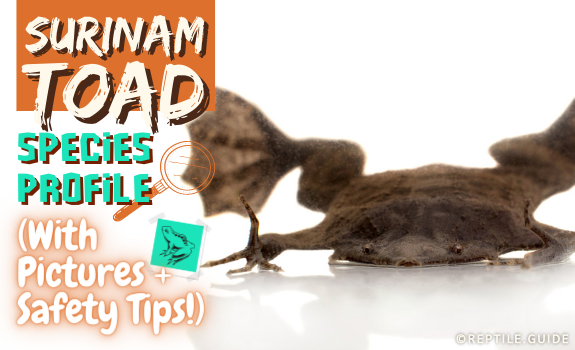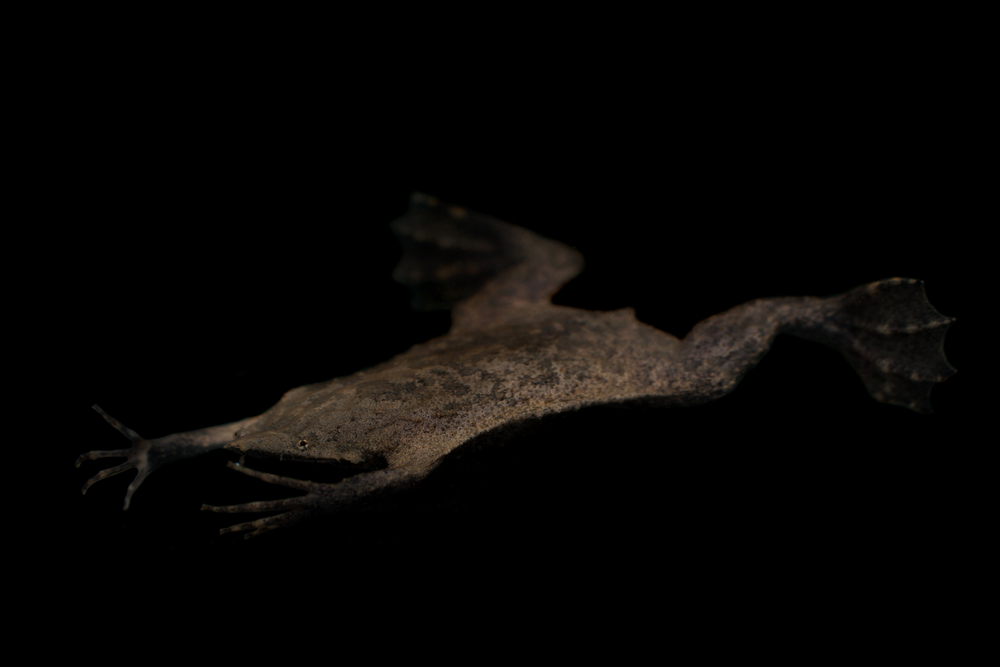The Surinam toad or Suriname toad is one of the most fascinating amphibians known to man. Not only does it have a fully aquatic life, but there are no Surinam toad tadpoles.
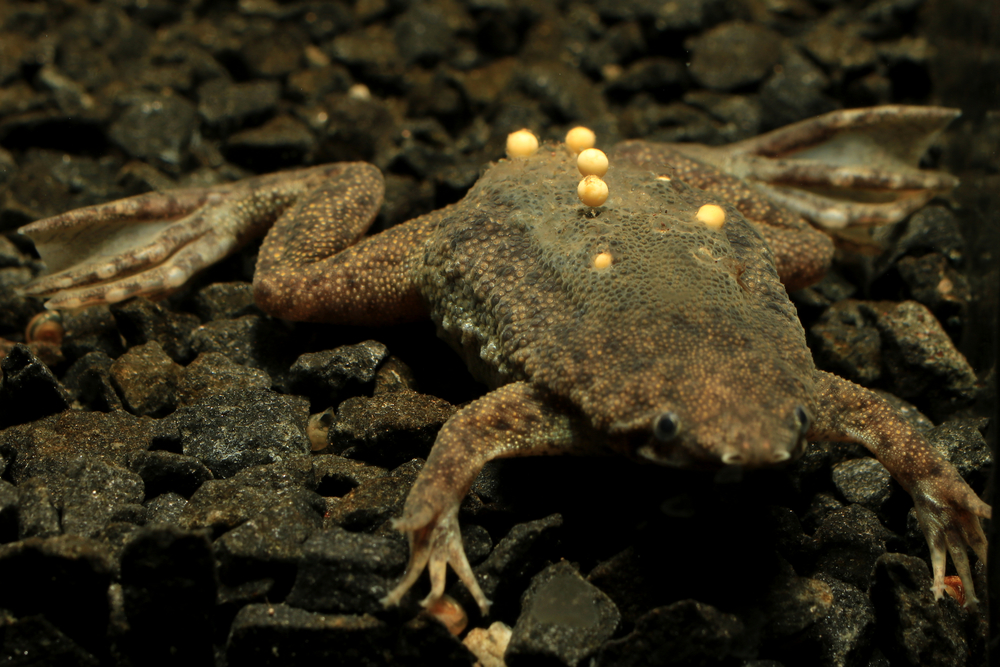
Let’s take a closer look at this ribbiting, uh riveting, species.
In This Article
The Surinam Toad Pipa pipa in a Nutshell
Here are a few key points about the Surinam toads:
- They’re native to the swamps and waterways of South America.
- The eggs undergo a type of direct development and emerge as fully-formed toads.
- The mother toads absorb the eggs into the skin of their back, then “give birth” once the toadlets are fully formed.
- Pipa pipa is the best-known species in the genus, but there are six others – some of which are endangered.
- The Surinam toads have star-shaped fingers which allow these frogs to detect fish, worms, and other invertebrates in the water.
Surinam Toad Care
Although they’re rather unusual, these amphibians aren’t hard to care for.
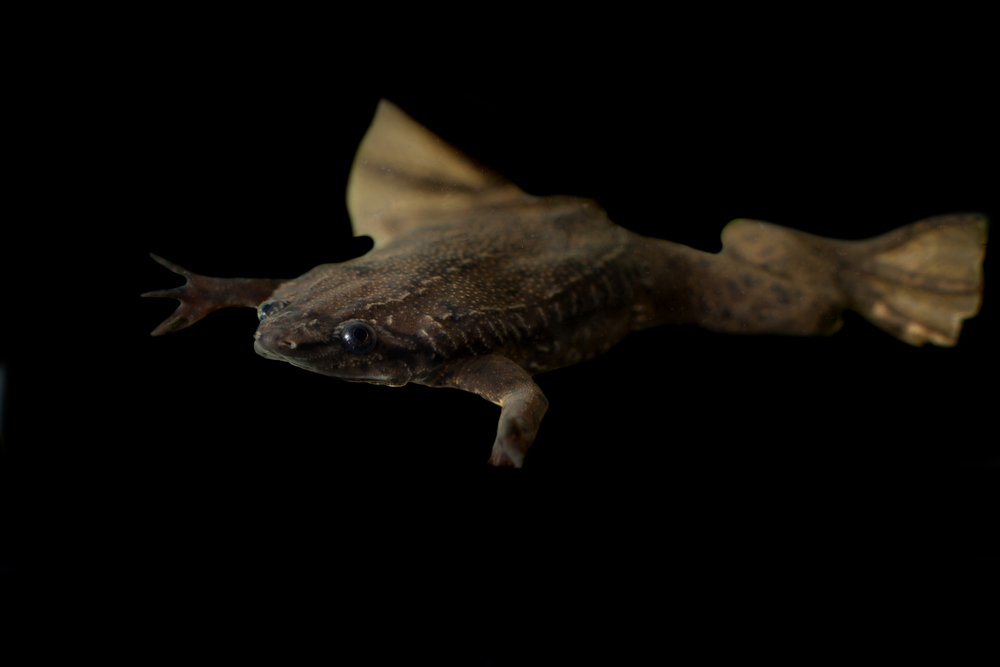
As long as you provide a balanced and varied diet, and keep the water quality high, these toads make great pets.
Housing
These amphibians are relatively inactive and require a surprisingly small amount of space. A 45 or 50-gallon aquarium can easily house three adults.
Lighting
As with most amphibians, the most essential part of lighting the Surinam toad’s aquarium is that you provide a day and night cycle.
You can easily rig a basic fluorescent aquarium tube to a timer to ensure that the toads have 12 hours of light and 12 hours of darkness every day.
Substrate
Most frogs, and aquatic ones in particular, have very sensitive skin.
When choosing a substrate for these toads you want to avoid anything with sharp edges. You also want to avoid substrates that will raise the PH too much or may cause impactions.
Substrates to avoid include:
- Gravel
- Peat moss
- Coarse sand
- Coconut peat
- Wooden substrates
The best option for these amphibians is to use a bare-bottomed tank with a sparse layer of aquarium-friendly leaves.
If you want to use a substrate, consider using soft, fine filter sand that can easily pass through your frog’s system.
You can also combine the sand with large, rounded pebbles to create texture.
Feeding
These frogs aren’t picky where feeding is concerned, and you can feed them a wide range of foods, including:
- Mealworms
- Bloodworms
- Tubifex Worms
- Soft shrimps, or pieces of shrimp
- Crickets (submerged using tweezers)
- Earthworms (not from a bait shop, though)
- Pieces of mussels and other seafood (washed thoroughly to remove salt deposits)
You should feed them as much as they’ll eat, three to four times a week.
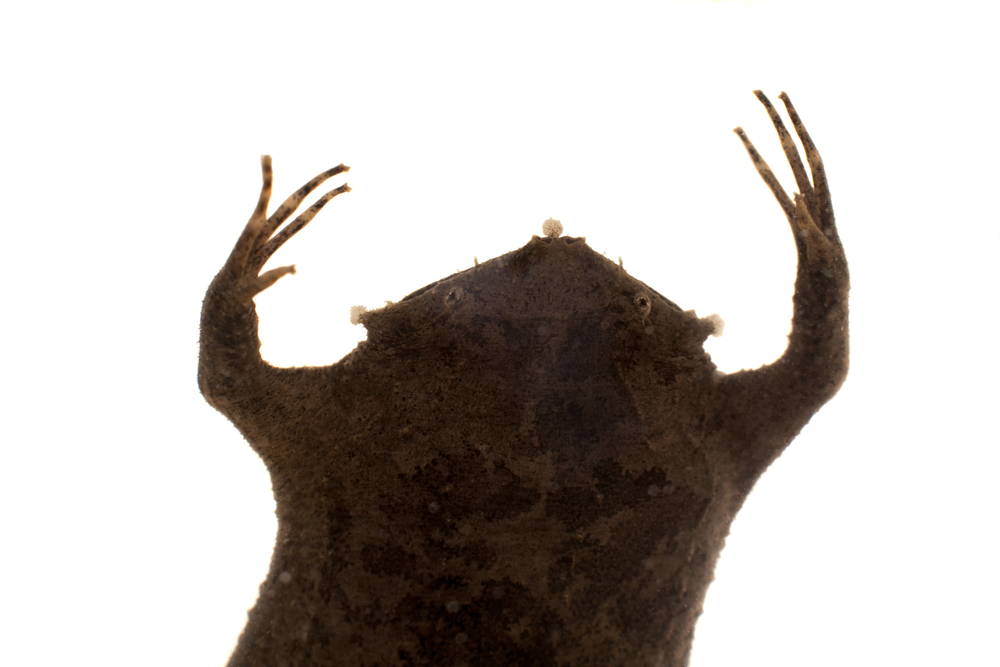
Water Conditions
These frogs aren’t overly picky about water conditions but benefit from a slightly acidic pH (around 6 or 7), and soft water conditions.
Use a high-quality filter to keep the water quality high, but avoid filtration that will create turbulent water conditions.
Are Surinam Toads Poisonous?
Scientists do not consider Surinam toads poisonous.
However, most frogs produce minor levels of toxins in their skin, so eating a Surinam toad can have unwanted consequences.
Where Do Surinam Toads Live?
Surinam toads prefer a slow-moving aquatic habitat and often dwell in swamps, marshes, and oxbow lakes where the water is nearly stagnant.
In part, this is because too much motion prevents them from using their star-shaped fingers to sense motion from the creatures they prey on.
You’re more likely to see these toads in water bodies with dense vegetation.
Since these frogs live almost exclusively in the rainforest, conservation of their habitat is essential to their survival.
How Do Surinam Toads Reproduce?
As with most frogs, the Surinam toad reproduces by laying eggs. However, the method is somewhat different for these remarkable species.
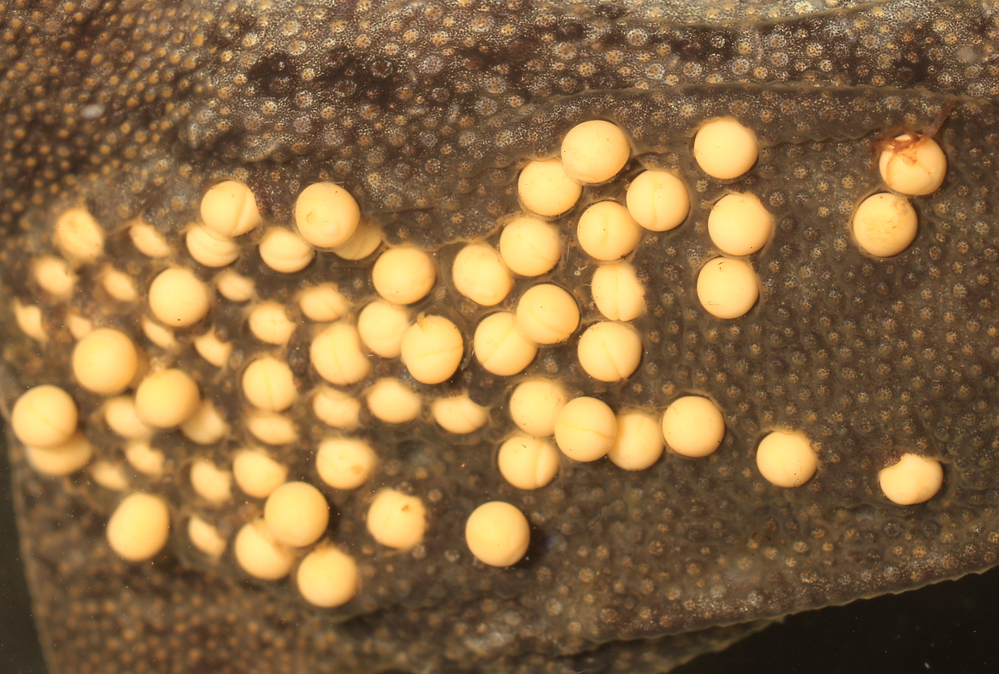
The male finds females by calling out using a clicking sound that can travel long distances underwater.
Once the male finds a willing female, the female releases eggs into the water, and the male fertilizes them.
Then, the male pushes the eggs onto the female’s back, which they stick to. Females have a special adaptation, where the skin grows over the eggs to protect them.
The female Surinam toad will continue to carry her young until they are fully formed.
How Do Surinam Toads Give Birth?
Most people think that the female releases the young toads when they’re fully formed. That’s not the truth though.
As we mentioned earlier, the female Surinam toad has special skin that forms pockets around the eggs to keep them safe.
Once the young are fully formed, and ready to emerge, they simply squirm and wiggle till the skin comes loose and they can escape from the pockets.
The female shows no other care instincts for her babies, beyond carrying them in her skin for around four months.
Do Surinam Toads Die After Giving Birth?
Although it’s a myth dating back to when the first Surinam toad was captured in South America, the Surinam toad DOESN’T die after giving birth.
At the time, scientists had little knowledge about the species and struggled to keep them alive. The fact that females died after giving birth was merely coincidental.
Females of this species can go on to produce multiple batches of babies without a problem.
Surinam Toad Facts
Here are a few fun facts about these fascinating toads:
- Their nostrils are located at the end of two narrow tubes.
- A female can produce between 60 and 100 babies at a time.
- They feed mainly on invertebrates and worms which they find by detecting motion with their fingers.
- These toads are closely related to the African Clawed Frog, and the Dwarf Clawed Frog, which means they’re not truly toads!
The Surinam toad has a flattened profile which makes it easier for them to swim through water. - Males attract females by making a clicking sound.
Related Species and Articles to Suriname Toads
- If you’re interested in other aquatic frogs, have a look at:
- – African Dwarf Frog Care Sheet
- – Albino African Clawed Frog Care Sheet
You can also check out our other articles on frogs – we have vital guides that you can learn from!
